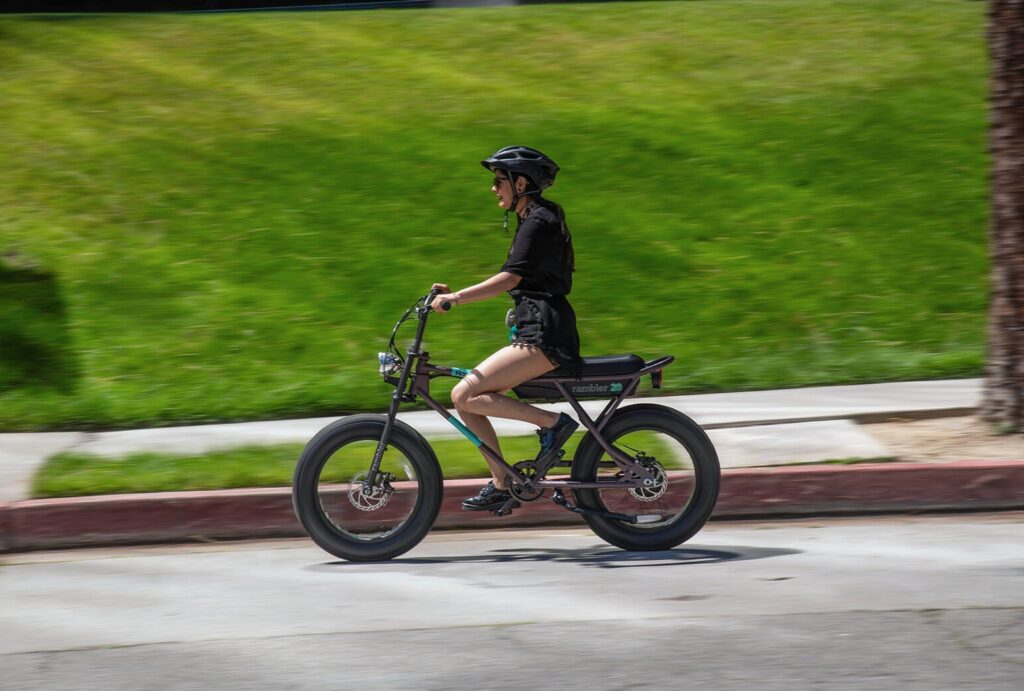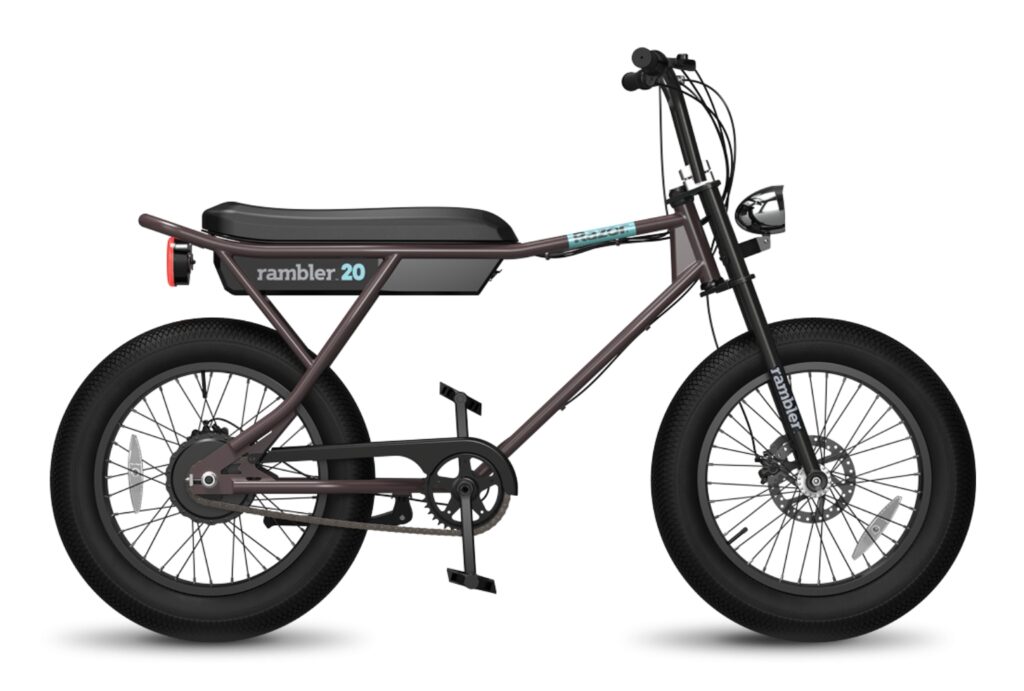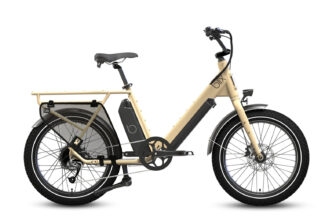Razor Rambler 20 Review Overview
Super73 kicked off the mini-bike craze, fashioned after the 1960s and 70s mini-bikes that you could buy out of magazine ads for around $80, then add your own lawnmower engine to power it.
Of course, Super73’s bikes use electric motors instead. The trend took off, and many other companies like Zugo, Juiced, Zooz, and others jumped on the bandwagon. Razor has now entered the market with its version, the Rambler 20.
Compared to the others, the Rambler 20 comes in at $999.99; less than half the price of the least expensive Super73 bike.
How can they do that? The simple answer is that they made it less expensive by using fewer materials.
It’s a Looker
The great thing about this bike is how stylish it is. It has that classic mini-bike look with the motocross-style padded seat, balloon tires, and triple-clamp fork setup, topped off with a bulbous chrome headlight and an equally motorcycle-ish tail light.

The battery and BMS are mounted neatly underneath that long seat. We still wish one of these companies would make the battery resemble a Briggs & Stratton 3-1/2 hp lawnmower engine. But, we like it regardless.
The frame is made of mild steel, as opposed to something lighter like chromoly or aluminum. The welds may not be the prettiest we’ve ever seen, but that’s understandable given the type of metal used.

It features a 500W rear hub motor, which gives it plenty of pull off the line. It has just one single gear, so that’s something to remember when it comes to pedaling. Most e-bikes offer a drivetrain with 9 to 12 gears. With this e-bike, getting started from a complete stop may not be a simple task without using the motor for help. It’s also not a hard enough gear to keep up with pedaling at 20 mph, leaving the rider spinning their legs at a high cadence. This was one of the compromises Razor chose to keep the price down, as derailleurs and multi-speed cassettes add cost and complexity.
Rest assured, it does offer pedal assist via a cadence sensor, so you can pedal to help with the range, but it could be challenging for some given riding position.
The Q-factor, which is the distance between the pedals, is particularly wide. It has to be for the chain to be able to go past the 4” wide tires. And because of the long seat built into the top of the frame, most normal-sized people (our ride is 5’8”) still have to sit all the way back on it, basically touching the rear rail, to get enough leg extension for comfort and efficiency. We got a 5’2” test rider on it, and she was able to pedal and ride comfortably, and even touch the ground with her feet at stops. You can see this in the video review on our YouTube channel.
Pump the Brakes
The Rambler 20 comes with mechanical disc brakes. The brake levers have cutoff switches, so when you first start braking, power is cut immediately from the motor to make braking more effective. The switches also actuate the rear light as a blinking LED brake light for safety.
The rotors are small, at 160 mm. A larger one would help offer a bit more leverage for better braking. Again, this is a heavy bike, and it’s juggernaut-adjacent when going full speed. They will stop you if you’re going at reasonable speeds, but if you’re a throttle-happy speed demon, make sure you allow more time to stop.

The total bike weight is just over 67 lbs. This is something to consider if you have to carry it upstairs or load it onto a bike rack. It fits onto our tester’s rack, a Hollywood Racks Destination e-bike rack, made for e-bikes up to 65 lbs per tray. It fits in the tray since it can hold 4” tires, but it’s still two pounds heavier than the rated limit. Thankfully, the battery is removable, and the rack has a ramp to get the bike up there, so we don’t destroy our backs lifting this beast up there.

The range is reportedly “up to” 16.6 miles, which seems to be measured by a 100 lb rider using pedal assist at assist mode 1. We asked Razor for the battery’s capacity since it isn’t in any of the specs online or via their initial press release. They told me 7.5Ah nominal. On a 36V system, that works out to 270Wh. Most of the expensive “super-light” e-mountain bikes opt for at least 350Wh batteries. This is likely the biggest corner that has been cut in order to keep costs down.
The battery level goes down fast if you’re just mashing on the throttle, like we were, jumping off curbs and launching off parking bumps. Let’s just say it is a really fun bike to ride, and even with no suspension, the big tires made landings nice. But the battery did drop one bar after a mile. At that level of fun, it would last four miles before going into limp mode. A higher-capacity battery option would be welcome, even for a few hundred dollars more.
By the way, if your family all loves this e-bike style, Razor makes a 12’ and 16’ version of the bike, called the Rambler 12 and Rambler 16, respectively.
Final Thoughts
There are some real pros and cons to this bike. It is a very stylish bike for $1,000. If you’re on a budget and want a mini-bike-style e-bike, this is the most affordable way to do it. It’s enjoyable to ride, and the big 4” tires run over bumps, roots, rocks, and just about anything you throw at it. By varying the air in the tires, you can easily take it on dry sand or soft dirt.

Remaining honest though, it is a heavy bike. All e-bikes of this style tend to be. The low end of Super73’s line starts at $2,395 and weighs just five pounds less than the Rambler 20. So, it’s something to keep top of mind when ready to make your purchase decision.
But, the biggest factor on this bike is by far the range. Due to its very low range of 10-16 miles, the Rambler 20 suits riders looking for short fun casual rides around town, never straying too far from a charger.










